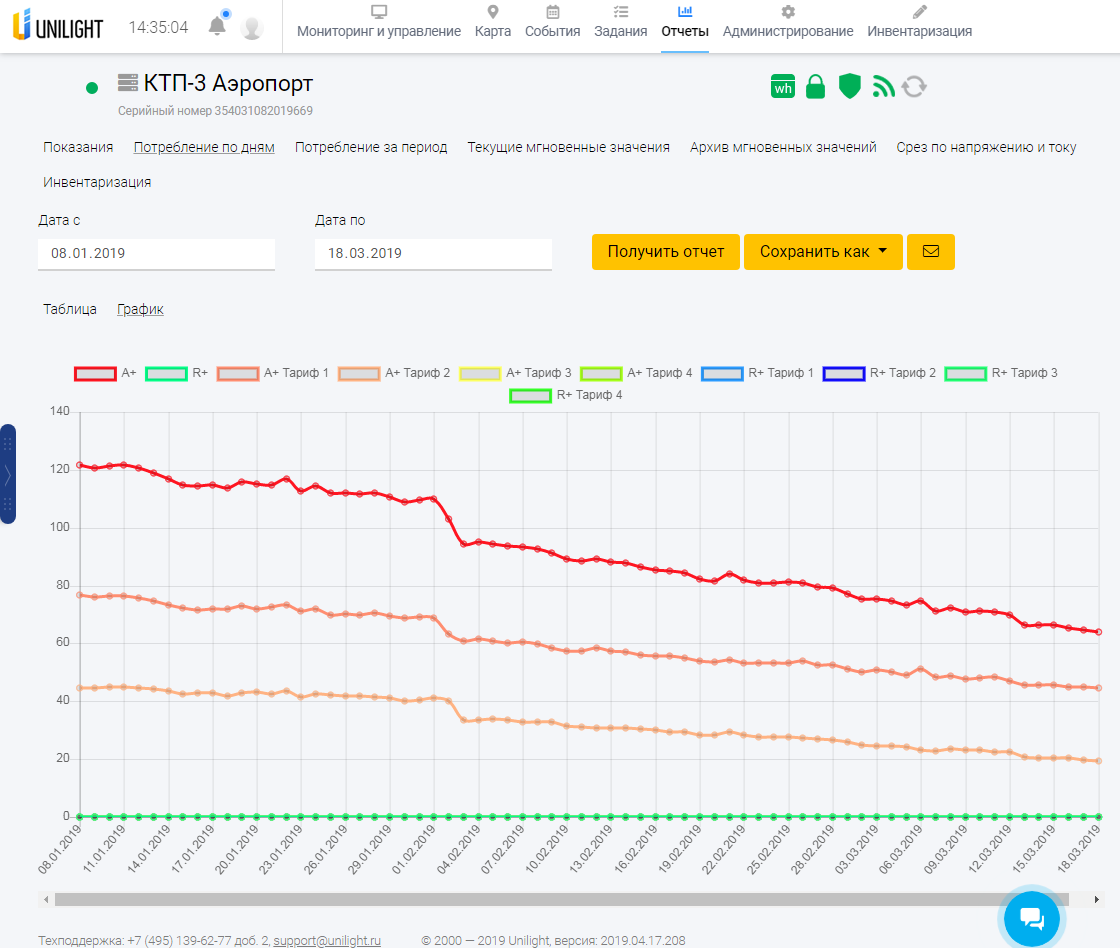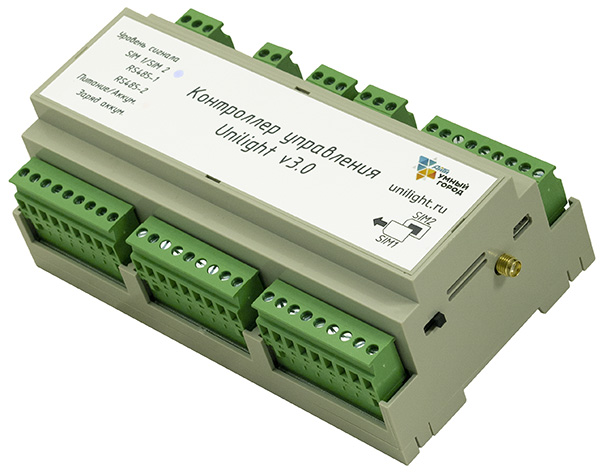Lighting master controller
Unilight master controller monitors the condition of the meter and low-voltage discrete inputs and also controls contactors used for switching any power circuit.
Controller has an autonomous power supply, responds swiftly to commands from the work station, is able to connect to external extension modules and work with two SIM cards from different providers.
Master controllers can work with OLCC Unilight or with an existing power equipment. MQTT protocol
allows it to adapt to various systems.
Functionality:
- Power metering, sensor data collection
- Possibility to manage units on schedule or on manager’s command
- Transmission of data on the condition of control panel components
- Staff can be informed about emergencies and other notable events through an emergency sound alarm, images, e-mails or SMS messages
- Support of up to 6 individual contactors
- Monitoring of up to 27 discrete inputs
- Two RS-485 interfaces to interact with external devices (power meter, light sensor etc.)
- Built-in GSM modem. 3G support
- Remote software updates
Software
User-friendly interface takes little time to master and reduces staff training costs.
OLCС manager’s workplace gives access to all the main OLCL functions: lighting switches, operation
mode change, sensor data, emergency reports, current power meter data.
Using different tabs for different functions keeps the interface simple and can be used to limit access to
certain modules to different user categories.
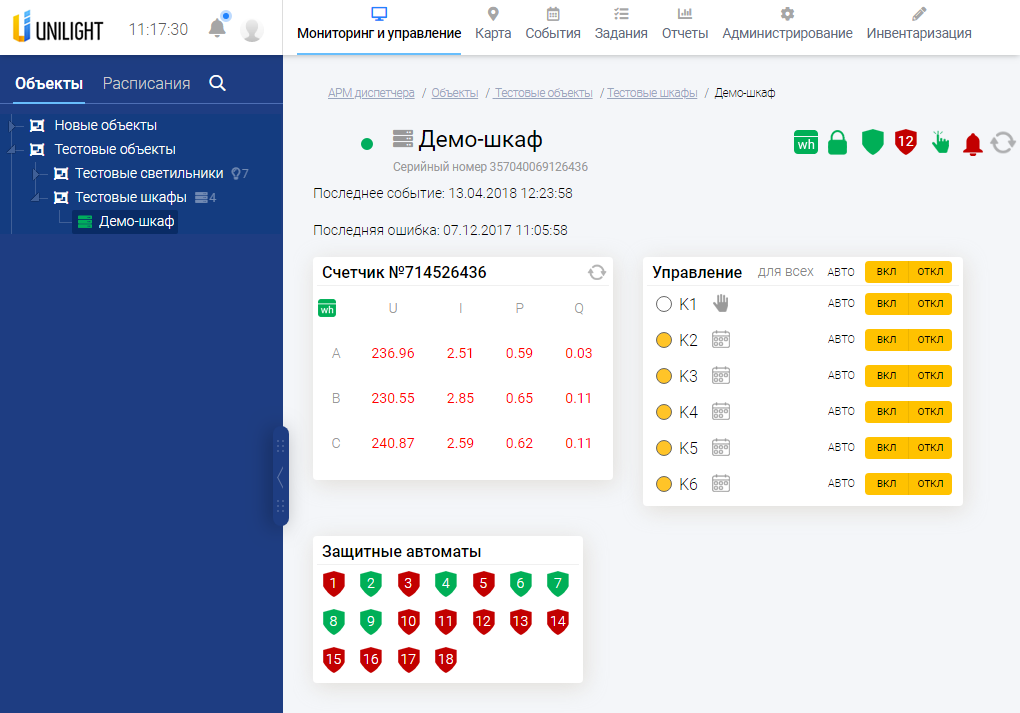
Interactive map
- Lets the user to monitor OLCC current condition and operating mode, check for accidents and
errors, facilitates lighting system maintenance and the work of OLCC managers and
maintenance crews - Cabinets can be managed through the city map, there is no need to open a single cabinet’s page
- Smart clustering checks for problems on a street, district, city level
- Inventory-taking: lighting lines, supports and luminaires with all the necessary parameters can be marked
and displayed on the main map
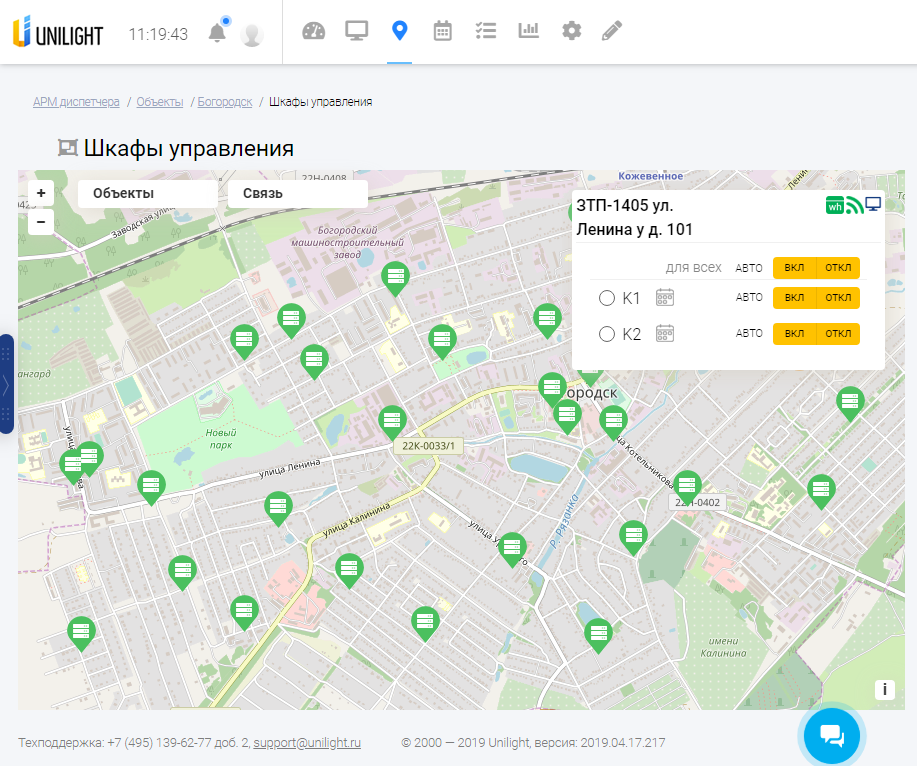
Adaptive interface
Individual cabinets can use classic web interface, cascading view or interactive schemes for visual
assessment of all OLCC nodes
Cabinet units can present information not only as a table, but also as a cascade or an object matrix, thus
one screen displays as much information as possible
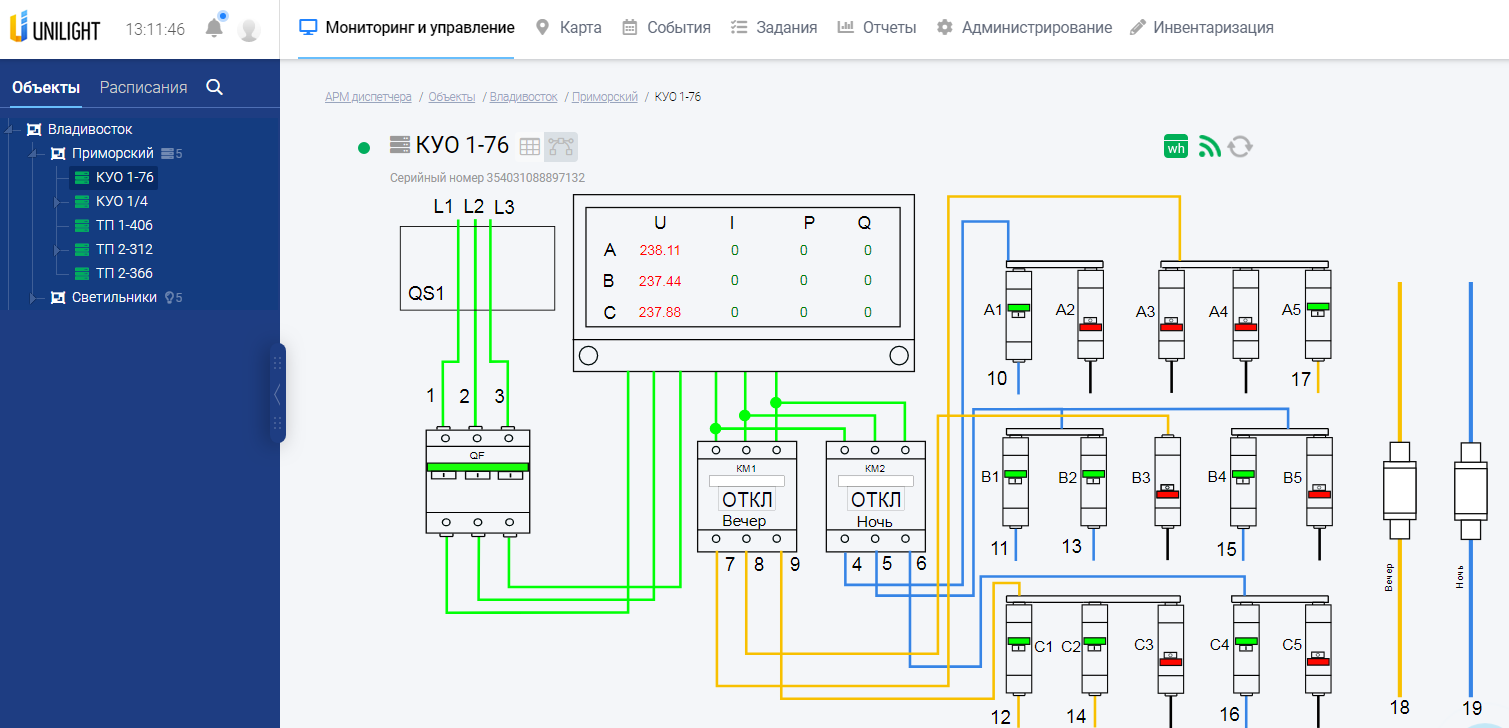
Data archive
All the data for all the period of OLCC service is stored with regular back-ups.
Graph and table reports are available on the following accumulated data:
- Meter reading
- Power consumption per day or period of time
- Actual and archive instantaneous value
- Current and voltage chopping
- Inventory-taking
It is possible to download the data in Excel, PDF, CSV, JPG, PNG formats.
